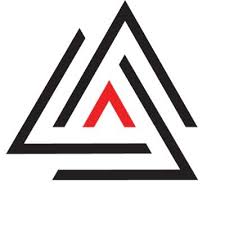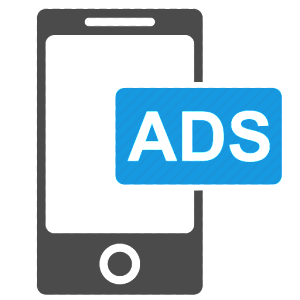World of Service Providers, October 2015
Each month, we put together a topical list of new & noteworthy happenings in the world of Service Providers. Look for information about digital agencies, creative shops, systems integrators, consulting firms, and everything in between. Here’s what’s been happening in the World of Service Providers – and why it matters – for the month of October 2015.
Partnerships
 WPP and Adobe recently announced that the two are expanding their strategic partnership to form the WPP-Adobe Alliance. Through this new partnership, six WPP agencies across 20 countries will provide clients with services for Adobe Marketing Cloud. Kelly Ann Bauer, Vice President of Strategic Partnerships at WPP, leads the venture. The deal will allow WPP agencies to leverage adobe integration and optimization skills across the alliance with a focus on helping global clients leverage data insights on a world-scale.
WPP and Adobe recently announced that the two are expanding their strategic partnership to form the WPP-Adobe Alliance. Through this new partnership, six WPP agencies across 20 countries will provide clients with services for Adobe Marketing Cloud. Kelly Ann Bauer, Vice President of Strategic Partnerships at WPP, leads the venture. The deal will allow WPP agencies to leverage adobe integration and optimization skills across the alliance with a focus on helping global clients leverage data insights on a world-scale.
As WPP strengthens its technology partnerships, the network of independent agencies is also growing. In October, DNA Seattle announced it would be joining the Global Agency Network ICOM, which currently boasts more than 80 advertising and digital agencies worldwide and has a gross income in excess of $500 million. The network enables independent agencies to develop on-going relationships in a non-competitive environment, allowing teams to tap into collective wisdom, and share knowledge, experiences, and in some cases, access to new clients. DNA’s CEO Alan Brown says the move is not to counter the growing power of the likes of Omnicom or WPP. However, with WPP’s new Alliance and aggressive acquisition history, independent agencies such as DNA will really benefit from taping into larger, global resources in order to win – and succeed – with global clients.
New Ventures
 AOL and Verizon have teamed up with Publicis on a mobile-first ad sales partnership. The new venture is reportedly worth upwards of $50 million. In the deal, Publicis’ agencies and brand partners will receive exclusive ad inventory on the new platform for three months, and on a non-exclusive basis for three more quarters starting next year. This venture comes at a pivotal moment when consumers are demanding more content in mobile form. Consider that 82% of smartphone users say they consult their phones on purchases they’re about to make in a store, and 91% of them turn to their phones for ideas in the middle of a task. And while mobile is only one piece of an overarching customer experience strategy, it is a vital piece that cannot be ignored by brands or their service providers charged with helping to create better digital experiences with them. The Publicis-AOL-Verizon deal is a step in the right direction that will focus brand attention on mobile content and positioning.
AOL and Verizon have teamed up with Publicis on a mobile-first ad sales partnership. The new venture is reportedly worth upwards of $50 million. In the deal, Publicis’ agencies and brand partners will receive exclusive ad inventory on the new platform for three months, and on a non-exclusive basis for three more quarters starting next year. This venture comes at a pivotal moment when consumers are demanding more content in mobile form. Consider that 82% of smartphone users say they consult their phones on purchases they’re about to make in a store, and 91% of them turn to their phones for ideas in the middle of a task. And while mobile is only one piece of an overarching customer experience strategy, it is a vital piece that cannot be ignored by brands or their service providers charged with helping to create better digital experiences with them. The Publicis-AOL-Verizon deal is a step in the right direction that will focus brand attention on mobile content and positioning.
In other news, Havas is acquiring Paris-based digital communications firm Fullsix for approximately $75 million. Fullsix, which has offices in France, Portugal, Spain, Italy, U.K., and the U.S, will be maintained as a separate brand. The company brings in a dynamic mix of advertising and communications expertise, and adds to a growing Havas digital portfolio. The acquisition for Havas is the first big move since acquiring both MPG and Snyder Communications back in the early 2000’s. While other global advertising conglomerates have grown through aggressive acquisition strategy, Havas is content in growing for fitness, rather than fatness, says Havas CEO Yannick Bolloré.
Brand Insights

Large companies can often become complacent in innovating new techniques or products while still maintaining growing revenues. It’s one of the primary reasons that Google transformed into Alphabet (the ability to grow beyond the iconic Google brand), and why the company still invests about 10% of revenue into moonshot projects, like drone deliveries and self-driving cars. A new trend is emerging where large companies like Coca-Cola, GE, and AT&T are launching ‘startups’ within the confines of the organization to promote agile learning and rapid development of new ideas and creative solutions. Companies like GE have enlisted the help of a management-consulting firm to bring in 500 coaches to train executives to embrace new concepts like risk-taking and learning to fail fast. Likewise, AT&T has a program called Foundry, which acts as an innovation accelerator. The company has four locations, and the goal is to shorten the lifecycle of innovation to product launch – moving from a typical two year lifecycle to launching in less than six months. To achieve the agile approach, the company partners with local startups to understand emerging cultures and technologies. Coca-Cola also participates in Start-up Weekends, where Coke employees and startups in the residing area can pitch ideas. The incubator acts as a way to bring the community and diverse teams across the organization together to innovate and build solutions to company-wide problems.
Each of these programs brings together a start-up mentality within the large organizations, which encourages employees to pitch ideas and in turn, organizations are providing employees with experimental capital to pursue those ideas. The organizations frequently consult with, or bring into the fold, outside help – including local startups, management consulting firms, and others with experience in startup culture. In the case of large organizations like GE and Coca-Cola, they have many benefits, but quick, nimble movements are a key factor to innovating new ideas for the company. These types of programs help to enhance innovation and galvanize a quick-thinking culture that enables growth and opportunities that are often unexpected. While they may fail, the point is to fail fast and learn from mistakes even faster.








